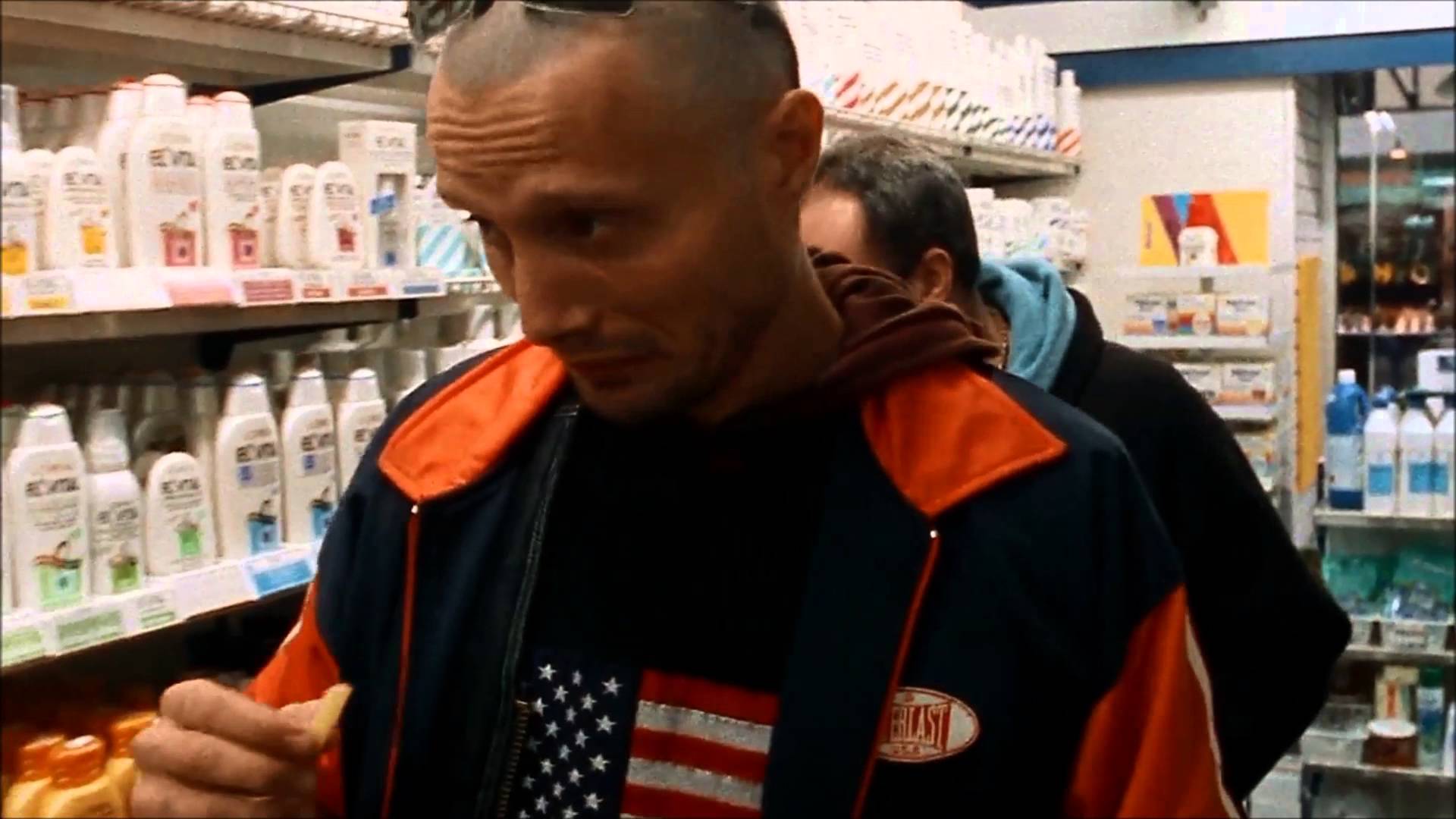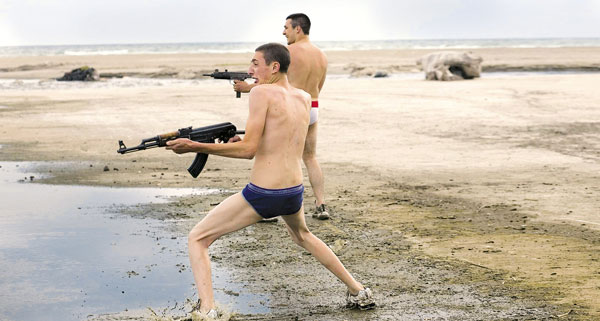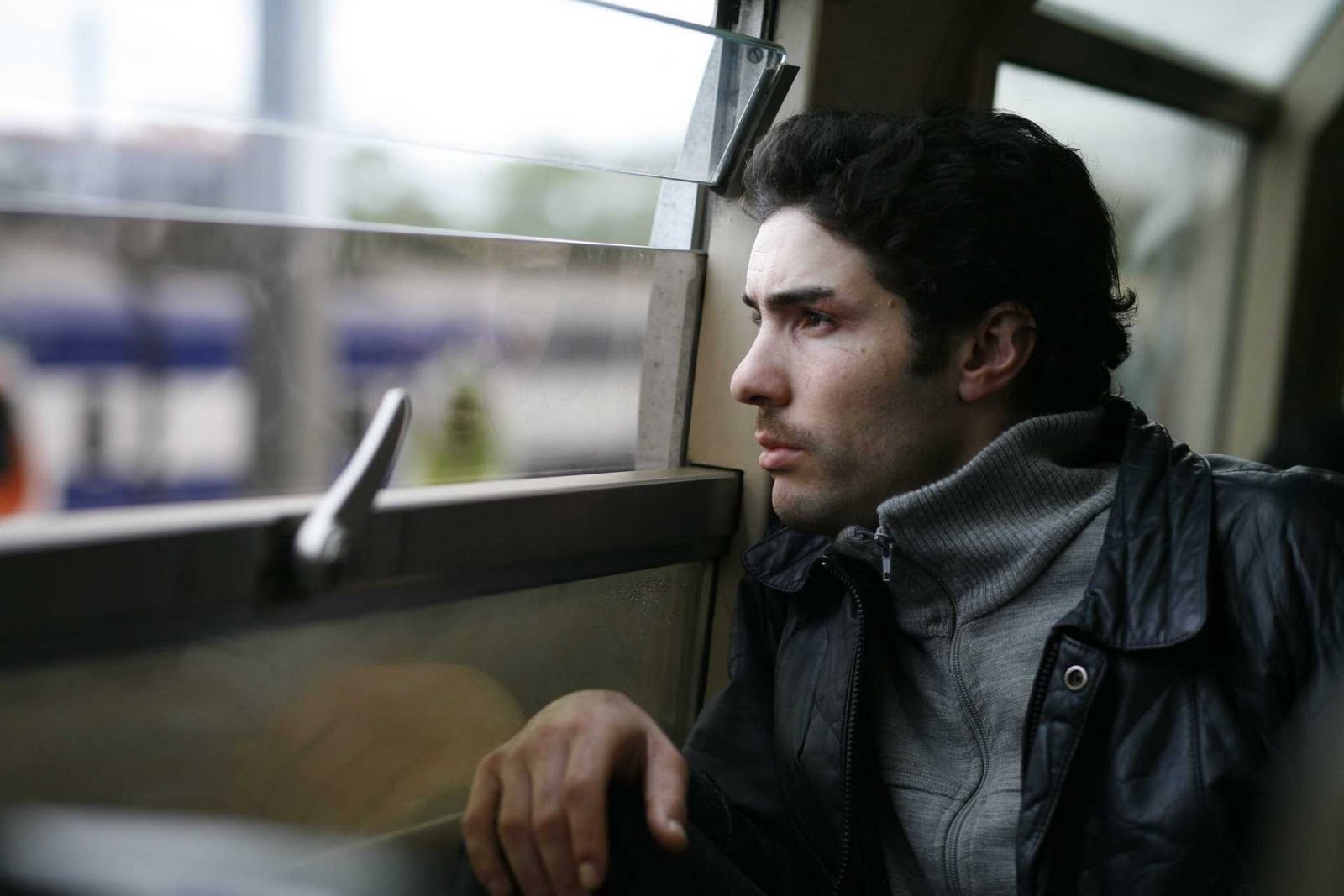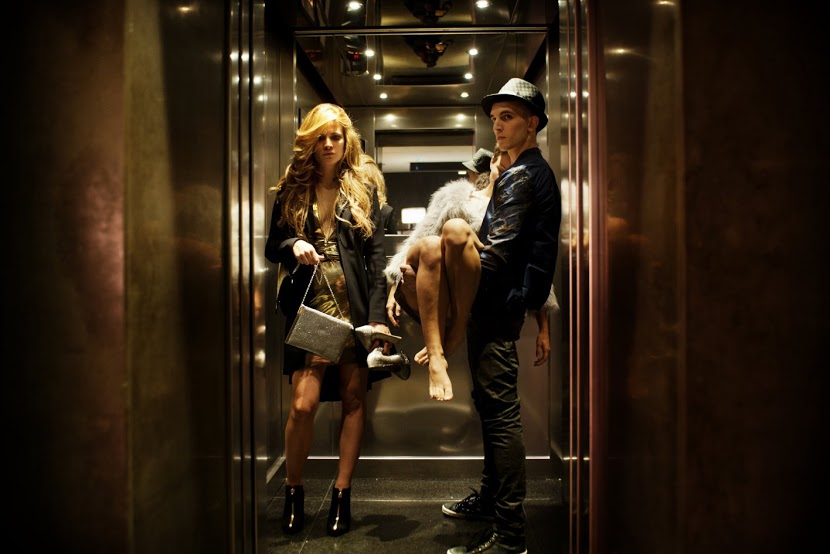6. Goodfellas (1990)

A list about gangster movies couldn’t be complete without a Martin Scorsese film. Out of many films the director has made about modern outlaws, “Goodfellas” stands out as the most iconic. The movie showcases the detailed story of the rise and fall of Henry Hill (Ray Liotta), who started working for the Italian mafia at a young age and soon became one of the leading gangsters in the family.
During his criminal journey, he meets and works closely with James “Jimmy the Gent” Conway (Robert De Niro) and Tommy DeVito (Joe Pesci). The adrenaline and their luxurious lifestyles will destroy every piece of the empire the three had created, due to many actions and businesses forbidden by the family. “Goodfellas” is a masterpiece, no doubt about it; Scorsese created a bold and stylish film, without forgetting about realism.
The movie is based on the non-fiction book “Wiseguy: Life in a Mafia Family” by Nicholas Pileggi, who also co-wrote the screenplay. From the costumes, the cinematography, the set design, the soundtrack, and the camera movements, everything is perfect. The director finds the perfect balance between great visual style and gritty authenticity; even in the few over-the-top moments, we still believe the realism of the scenes.
Talking about this movie is useless. Everything has been said about it, and everybody has given their personal opinion about it. It’s part of the glorious history of cinema. No ones forgets the first time they saw “Goodfellas.” It’s one of the few gangster movies that, while being highly quotable and full of class (unlike many others), is still considered authentic and not stereotypical or hyperbolic in its depiction of organized crime.
7. Pusher (1996)

Forget about the later works of Nicolas Winding Refn – all the neon colors, the expressionist cinematography, the hyper-structured directorial style and enigmatic screenplays – and embrace the early work, with his first energetic gangster movie.
Frank (Kim Bodnia) and his right-hand man Tonny (Mads Mikkelsen) are small drug dealers, operating in Copenhagen. After Frank is busted by police during a deal, he destroys all the evidence – a large quantity of heroin given to him by drug lord Milo (Zlatko Burić) – and he’s released from the police headquarters. Already owning a debt with Milo, he must find all the money before facing a violent reaction by drug lord’s sidekick Radovan (Slavko Labović).
The movie is shot with a hand-held camera in order to achieve a documentary-like quality. The usual flashy and stylish depiction of gangsters is replaced by an authentic and vividly realistic portrayal of the drug dealing business.
The main character must struggle in the underworld in order to make a living and survive; the dangerous and utterly violent environment in which the protagonists are living is coherently depicted as the real-life world of drug dealers and criminals. If you liked “Pusher,” make sure to see the two sequels in order to have a complete vision of this precious trilogy.
8. Gomorrah (2008)

“Gomorrah” is an interlacement of five different stories that describes the criminal underworld of Napoli and its most infamous and powerful organization, Camorra. Pasquale is a skilled tailor who is employed illegally in a tailor shop.
The owner of the shop, on the other hand, is indebted with Camorra usurers. Pasquale finds an additional well-paid job in a garment factory that is run by Chinese immigrants. He must deal with the disapproval of his employer.
Totò is a teenager who delivers groceries for his mother’s business. During a round-up, he collects a gun and a bag full of drugs, lost by criminals, and he gives them back, asking to join the gang. Don Ciro distributes weekly rates to families linked with the underworld. He gets caught in a internal feud and will have to “do a favor” in exchange for his life.
Roberto works with his boss Franco – tied to Camorra – in the waste management business, exploiting illegal methods to earn more money. Roberto gets to know how the business works and the high costs, in terms of health and pollution, of their illegal behavior. He’ll have to decide if he’s fit for the job.
Lastly, Marco and Ciro – nicknamed Pisellino (Sweet Pea) – are young boys, raised on the myth of Tony Montana. They decide to turn these fantasies into realities, doing illegal actions on their own. They refuse to be commanded by the local gang and they face the consequences.
The movie depicts an authentic and rough portrait of the Neapolitan society, crushed by organized crime. There’s nothing poetic or mythological about the way gangsters behave; above all, the tale of Marco and Ciro lights up the reality of gang violence and crime: the fictional and hyperbolic figure of Tony Montana doesn’t hold up to the evil environment they choose to live in.
The realistic feel of the movie – based on the homonymous book by Roberto Saviano – is given by the directional choice, with a great use of hand-held camera and the absence of any kind of virtuosity, in order to make you feel like you’re watching a documentary.
On the other hand, the environment described in the movie is pretty much the reality of Italy. The business of waste management is real; during the existence of Camorra, internal or external feuds have been common. Furthermore, an increasing number of youngsters are joining the clans, searching for a false redemption.
9. A Prophet (2009)

Malik El Djebena (Tahar Rahim) is a Frenchman and Algerian descendant, who must face a six-year prison sentence. He’s illiterate and alone, without friends inside or a family outside. He’s forced by Corsican mafia prisoners, led by César Luciani (Niels Arestrup), to kill another prisoner in order to stay alive.
After the killing, he starts to be increasingly involved in the business of the mafia, though he is never considered a part of the gang. With special permits, he can also go outside of the prison for 12 hours and carry out jobs for Luciani. He starts getting more confidence and begin to develop his own business, trying to become independent from the Corsicans.
The interesting aspect of the movie is that most of the scenes are set in prison. In this way, we can understand how organized crime acts behind bars, trying to take power of all the illegal businesses – the drug trafficking being the first and most profitable one – and corrupting the guards in order to get favors. There is no glamorous portrayal of the mafia and the life in prison; the assassination that El Djebena must carry out sets the tone for the movie.
The waiting is nerve-wracking and the execution is raw and bloody, depicted in the most brutally honest way possible. Overall, director Jacques Audiard manufactured an epic, yet very realistic, crime story that will be recognized as one of the finest gangster movies of the last 10 years. It’s an experience that no one can deny.
10. Suburra (2015)

Directed by Stefano Sollima – the director of “Sicario: Day of the Soldado” (2018) – and based on the homonymous novel by Carlo Bonini and Giancarlo De Cataldo, the movie depicts the criminal realty of Rome and the links between the underworld and the establishment.
The film follows the paths of different characters. Filippo Malgradi (Pierfrancesco Favino) is a MP who’s involved in the approval of an important bill. In his private life, despite having a family, he uses hard drugs and meets with prostitutes. Sebastiano (Elio Germano) arranges exclusive parties and he’s obliged to pay the debts of his dead father, who committed suicide, to an underworld gypsy family.
Lastly, we witness the criminal business relationship between thug Aureliano Adami (Alessandro Borghi) – called “Numero 8” (Number 8) – and an organized crime boss called “Samurai” (Claudio Amendola), a former neo-fascist terrorist. Rome is the capital of Italy: it’s the political centre of the peninsula and also the religious capital of the Catholic Church, with the presence of Vatican City.
For these reasons, when we talk about Roman organized crime, we can’t forget to mention its links with the political and religious powers. “Suburra” perfectly describes these connections: no one is a saint in Rome.
Sollima is definitely skilled for the job. He recreates a dangerous and dark environment, with great use of rain and nocturnal sequences. Moreover, the synth soundtrack – by French artists M83 – follows the developments impeccably, with its atmospheric chords and progression.
The inspiration for the book and the movie was Mafia Capitale, an illegal organization that stole public money from the city and used it for criminal activities. In fact, we have to mention that “Samurai” is based on the real life character Massimo Carminati, a former member of the Italian neo-fascist terrorist organization NAR (Nuclei Armati Rivoluzionari – Armed Revolutionary Squads) and the most powerful Roman criminal of the last 30 years. He’s currently in prison for his involvement with Mafia Capitale.